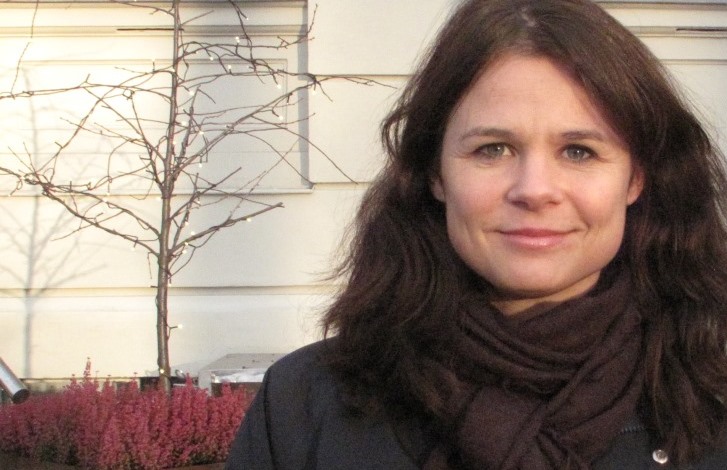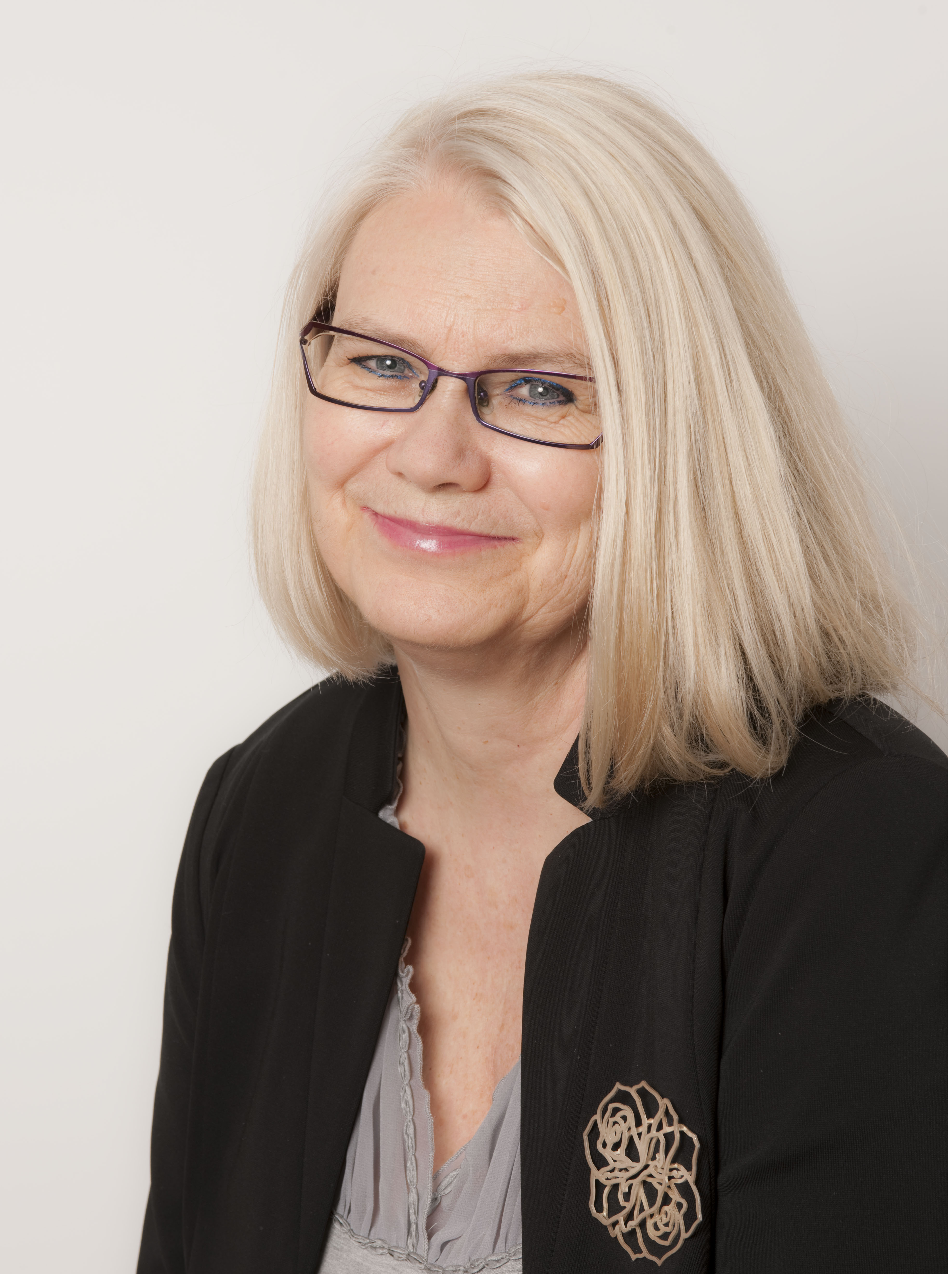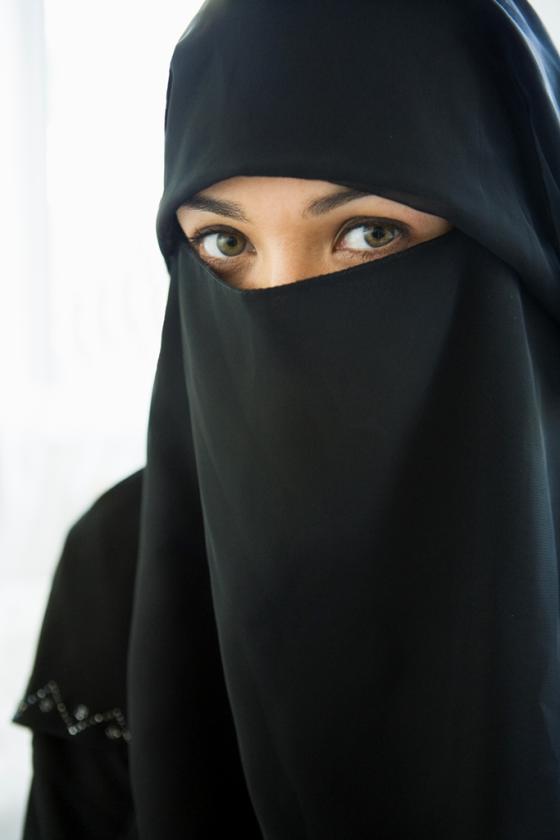Niqab ban is not unlawful
There are sound legal arguments both for and against allowing the niqab to be worn at higher education institutions. A ban can send a clear signal in support of gender equality, but it can also be exclusionary and lead to more extreme attitudes.
The debate about a ban against the use of full-face veils at university colleges began last year when a student in bioengineering studies wore a niqab to class. Both the academic department and the Faculty of Health Sciences at Oslo and Akershus University College of Applied Sciences (HiOA) found that her face covering was incompatible with the student’s participation in the bioengineering programme.
The student dropped out of the university college after two weeks, according to the school’s online newspaper Khrono.
Right to a private life and freedom of religion
Two legal provisions in particular can be used to defend the use of the niqab, explains Julia Köhler-Olsen, an associate professor of law. In the European Human Rights Convention, Article 8 addresses the right to respect for one’s private life and Article 9 deals with freedom of thought, conscience and religion.
“Both of these provisions confer a duty on the state to safeguard people’s right to choose how they want to live their lives and the opportunity to believe what they want,” says Köhler-Olsen of the Department of Social Work, Child Welfare and Social Policy at HiOA. She then explains the other side of the argument:
“But the state also has a right to set limits. Most human rights are regulated in the sense that the individual’s freedom and rights can also be restricted.”
Does not violate human rights
According to the European Human Rights Convention, two requirements must be fulfilled before public authorities can interfere in a person’s private life. In order to restrict an individual’s freedom, such as wearing a niqab, the public authorities must have an adequate aim and have made a proportionality assessment, explains Köhler-Olsen.
“The right to a private life may be restricted out of consideration for the fundamental rights of others, known as ‘adequate aim’. With regard to a teacher’s choice to wear a niqab, the students’ right to the best possible education may be an argument that the teacher’s freedom to dress as she wishes can be restricted.”
The form of interference must not only be adequate, it must be proportionate. Can the desired goal be achieved with a milder intervention than a ban, and is it possible in practical terms?
“It does not conflict with human rights law to introduce a ban in the university and university college sector,” confirms Vibeke Blaker Strand, an associate professor at the Norwegian Centre for Human Rights.
“When you’re in an institution that provides education, and you have teachers and co-students you’re communicating with, it’s lawful to introduce a ban. It has to do with maintaining a minimum level of interaction and communication in the public sphere,” she continues.

A niqab ban can lead to a backlash
“But how many people would a ban apply to? Is a ban necessary? It would be useful to look at the numbers when considering these questions. Could the educational institution have a dialogue with the few women it concerns, or could there be other measures that satisfy everyone’s interests?” asks Blaker Strand.
Berit Thorbjørnsrud, an associate professor of Middle East Studies at the University of Oslo, also thinks that the measures should be weighed in relation to the number of people the ban would affect. At the same time, she cautions against exaggerating the size of the problem and underplaying the complexity.
“I think in this case an individually oriented dialogue with clear guidelines may be a better measure than a general ban. If a large number of students wanted to wear a niqab, it would be a different matter, but so far it concerns very few people.”
“Research on veiling shows that throughout history bans and requirements have very often led to a backlash. A niqab ban is seemingly an easy answer, but I think over time it could lead to a bigger problem, for example, that the niqab could take on stronger symbolic meaning,” explains Thorbjørnsrud.
Only affects women
An important aspect of a niqab ban is that it would exclusively impact minority women. Society wants those women to participate in the educational and social spheres, and all three researchers fear that a ban would limit their opportunities to do so.
“It is only women who wear the niqab, not men. So who is affected by a ban? Women, of course. Although we formally have equal rights, we live different lives as women and men, minority and majority, secular and religious. A neutral rule about clothing would, in practice, impact minority women,” notes Köhler-Olsen.
The danger is that a group of women will be excluded, end up not getting the education they otherwise would have, and be relegated to the private sphere. This would entail costs at the societal and individual levels.
“Again, it’s women’s clothing that is supposed to be regulated. As a teacher, one of my priorities is to ensure that women seek out education and have the opportunity to get an education. By the same token, those women can also make choices that gradually shut down their opportunities,” says Thorbjørnsrud.

Does the niqab represent freedom or oppression?
“It’s not necessarily the case that women are pressured into something they don’t want when they wear a niqab. The reality is far more complex. The niqab may also be a sign of protest and an identity marker. Women who wear a niqab often make the usual arguments about women’s right to dress as they please.
On the other hand:
“When a gender uses clothing to show its subservience and honour code, it contradicts the strong gender equality policy conducted in Norway in the post-war period. HiOA could likely win the case for banning the niqab by arguing that a ban would promote gender equality policy,” says Köhler-Olsen.
Blaker-Strand refers to Article 5A of the UN’s Convention to Eliminate All Forms of Discrimination against Women, which states that public authorities must take all appropriate measures to eliminate practices that are based on the idea of inferiority of either of the sexes.
“This type of clothing requirement, such as the niqab, applies only to women and entails a belief that women have a special duty to maintain propriety between the sexes by the way they dress. This same duty is not imposed on men,” she says.
As a result, the ban negatively affects the participation of a group of women whose position in society the public authorities actually want to improve. Ethnicity, religion and gender are interwoven as a basis for discrimination. A clothing ban could worsen the situation of an already vulnerable group, according to Blaker Strand.
Incompatible with academic studies?
HiOA states in its policy draft that clothing rules may be stipulated if they are justified in terms of security, health and hygiene, or the need for communication and identification. This is connected with public safety and security, according to Julia Köhler-Olsen.

“In the health sciences, schools have an obligation to educate students to become safe and secure health workers. Safe and secure in the sense that they can perform all of the required tasks, and this is not possible when wearing a niqab. In this case, a person cannot satisfactorily complete her education,” she explains.
Another consideration is that they will work in jobs where covering the face is not compatible with good professional practice, according to Köhler-Olsen. Clear, reciprocal communication also occurs through facial expressions and gestures. As a general rule, we can read more from a face than the words that are spoken.
“The niqab can make cooperation difficult, such as in group work, which is frequently used at the university college. Will everyone in the group get the maximum benefit? It could be argued that other students’ right to a satisfactory education and competence will also be weakened,” says Köhler-Olsen.
“Should there be different rules for various subject areas and academic departments, or the same for the entire educational institution?”
“There can be rules for the entire university college which include a proviso that some rules are not equally relevant in all subject areas,” says Köhler-Olsen.
“The four points in the school’s policy draft, consideration for security, health and hygiene, and the need for communication and identification, especially communication and identification related to clothing, apply to everyone regardless of which course of study they are enrolled in.”
Can intervene more vis-à-vis employees than students
Employers have the authority to issue instructions to employees pursuant to the Working Environment Act. In this case, employees must tolerate more restrictions than a private person, explains Köhler-Olsen.
“The employees are at a workplace. There is no intervention in the home or in the most private sphere, but employees are at a public place, and have agreed to teach. They want to be there.”
“University colleges and universities can prohibit certain types of clothing. There doesn’t have to be any law, in the sense that it must be stated in Norwegian legislation. It is sufficient to have regulatory provisions, school rules or employee requirements which state that you must be dressed so that the students can see and interpret you.”
“Both the niqab and extremely short mini-skirts or other ‘inappropriate’ garments may be prohibited types of clothing,” says Köhler-Olsen.
Actively supportive religious policy
There are different religious practices in Europe, and countries vary widely regarding how much religion they allow to be practiced in the public sphere. In cases from France and Germany, religious neutrality in the public sphere is used as a strong argument against the use of religious symbols such as the niqab. Religious symbols have no place in the public sphere in those countries; the state must be neutral.
“In Norway, it’s not certain that neutrality would have succeeded as an argument. Norway has clearly stated that we will be actively supportive in our religious policy. Religion has a visible place in society. We cannot suddenly prohibit it for some, and permit it for others,” says Köhler-Olsen.
“On the other hand, Norway has a much stronger tradition of gender equality policy than France and most countries in Europe. Norwegian authorities would probably be able to use the gender equality argument in a potential court case.”
Should have dialogue
Blaker Strand, Köhler-Olsen and Thorbjørnsrud all think it is difficult to speculate about the implications of a potential ban, but they believe it could play out several different ways.
“I’m afraid that minority women will feel excluded. At the same time, it would send a signal that in Norway we don’t allow a practice where we can’t see each other. Seeing each other is an important value, which we want to maintain at educational institutions. Some people might find a ban to be exclusionary, while others might find it liberating,” says Blaker Strand.
“In the final analysis, it’s a political issue. It’s not the law that establishes the boundaries here; the law allows both,” she says.
“A ban is negative because it doesn’t allow for the possibility of dialogue; it closes doors instead. The women concerned will probably think they are unwelcome and be angry. If women who wear a niqab don’t get to participate in society or pursue an education, the niqab will become a barrier regardless,” says Köhler-Olsen.
“At the same time, it’s a point well taken that the interaction in a teaching situation will not work as well. The same is true for interaction with other students. A ban also signals that we don’t accept that kind of treatment of women,” she adds.
Berit Thorbjørnsrud is very sceptical of a ban.
“It would be unfortunate if a general ban was placed on the niqab. That could be perceived as a targeted attack. For those who are young and radical, the garment can be redefined into something more people could use in protest. A ban could encourage the use of the niqab as a symbol of protest,” she says.
Translated by Connie Stultz.
There have been several cases in recent years in which students’ use of the niqab has been discussed at Norwegian educational institutions, including at UiT – The Arctic University of Norway, Telemark University College, Østfold University College, and Oslo and Akershus University College of Applied Sciences (HiOA).
After a draft of HiOA’s niqab policy was circulated for review, Rector Kari Toverud Jensen recently decided that the institution will not impose a general ban on full-face covering. Instead, it will be up to each faculty to decide whether to set clothing requirements for its own study programmes.

